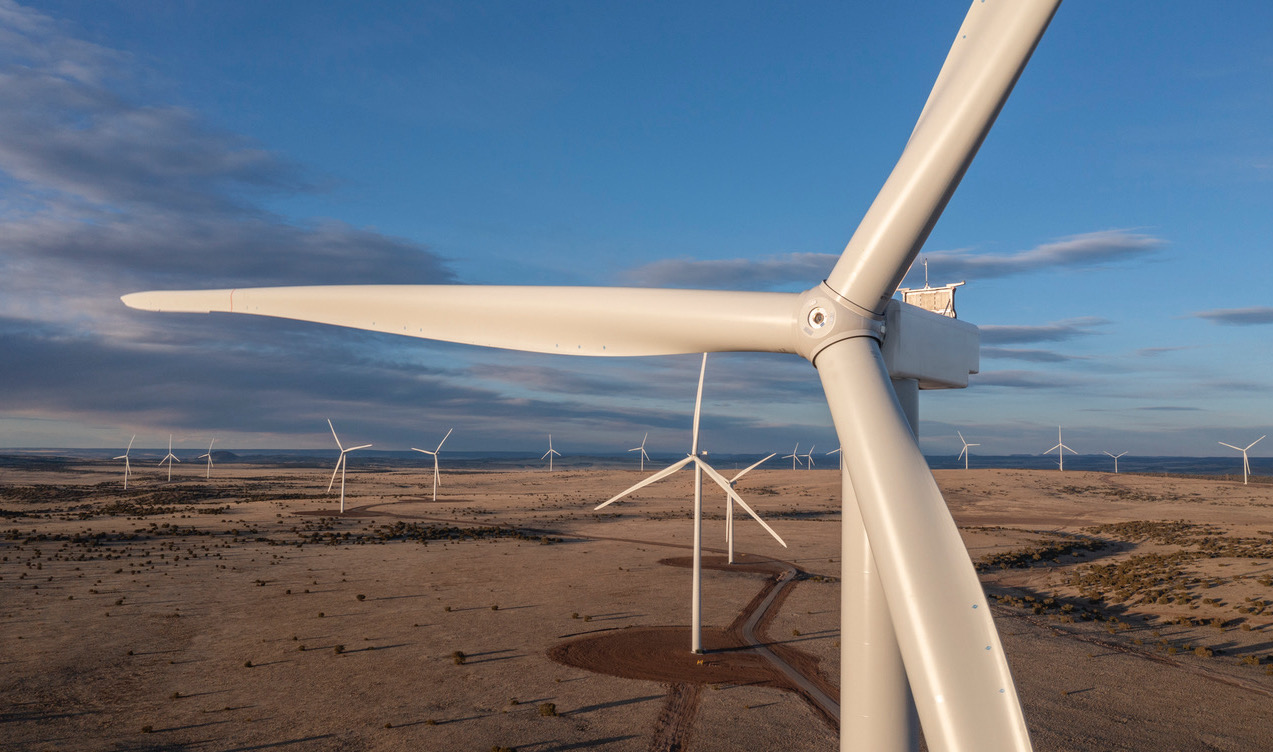Last week, when President Joe Biden spoke at the launch of the new Federal-State Offshore Wind Partnership — set up to speed the growth of the offshore wind industry in the United States — he highlighted the Haliade-X, a powerful turbine developed by GE Renewable Energy to serve customers around the world. Just one spin of the wind turbine’s 220-meter rotor can generate enough equivalent energy to power a U.S. household for one day.
But as mighty as it is, the Haliade-X is just one machine in GE’s portfolio of power technology. Today GE turbines, generators and other equipment help generate a third of the world’s electricity, and its grid systems help deliver it to millions of homes and businesses. GE engineers, scientists and technicians are hard at work around the world finding new ways to make all of these technologies more energy-efficient and help customers and governments around the world decarbonize.
This focus on sustainability at the company’s core is also the backdrop for the 2021 Sustainability Report, which GE released today. The annual document looks at GE’s sustainability goals and priorities and reports important milestones. “We are taking steps today to further strengthen GE’s ability to lead on some of the defining trends of our time — driving decarbonization through the energy transition, enabling precision health and creating a smarter and more efficient future of flight,” said Larry Culp, GE chairman and CEO. “As we prepare for a new and defining chapter in GE’s history, sustainability is deeply rooted in all of our plans and priorities.”
GE has been able to lead because of innovation, the driving force pushing the company forward since it was founded by Thomas Edison 130 years ago. The company, along with customers and partners, spent $3.7 billion on research and development in 2021. It’s involved in projects focusing on a range of breakthrough technologies that will play a key role in meeting the climate commitments made worldwide by 2050. Its engineers are supporting gas power plants that run on hydrogen blends in Europe, China, Australia and the U.S., where one plant in Ohio plans to run on 100% hydrogen within a decade. GE is partnering on a carbon-capture project in Alabama, piloting a flexible transformer in Mississippi to ensure a more resilient grid, and was selected to build small modular reactors to provide Canada with carbon-free nuclear power generation.
GE’s Aviation business, together with joint company CFM International, is developing the next generation of fuel-efficient engines while exploring the future of hydrogen and hybrid-electric-powered flight. (CFM is a 50-50 joint company between GE and Safran Aircraft Engines).
On the healthcare front, precision health — the idea that treatment can be tailored to individual patients — can help providers achieve better outcomes for patients, operate more efficiently and eliminate waste. One example is the Oregon Care System (OCS). Rolled out during the pandemic, the software suite — developed by GE Healthcare and powered by artificial intelligence — gives clinicians in Oregon near real-time information about ICU beds and other critical care resources in the state. It uses more than 4 million data points per day to match patients with required medical resources. GE Healthcare’s Vscan Air, a handheld wireless ultrasound scanner, beams images from the ultrasound probe to a smartphone app and can help clinicians in hospitals and in rural settings care for patients.
Culp said that GE’s employees are passionate about deploying and innovating technology to solve the world’s most pressing sustainability challenges in energy, healthcare and flight. “As we look ahead to forming three industry leaders with sustainability at their core, these strong independent businesses will better leverage our innovation muscles, technology expertise, leadership and global reach to build a world that works for everyone,” he said.
This is the second annual Sustainability Report released by GE. “We prioritized progress toward the commitments and ambitions we announced in recent years. Regarding climate change, our businesses detail their efforts to make operational improvements on our path to carbon neutrality for our Scope 1 and 2 emissions,” said Roger Martella, GE’s chief sustainability officer. “Our Aviation and Power businesses also share details regarding the Scope 3 emissions from their sold products. This includes, for the first time, a road map of innovation and technology toward the path to net zero for these critical and complex technologies in the years and decades to come.”
Besides emissions, the report also addresses GE’s environmental, social and governance (ESG) efforts and how they impact people, communities and the planet. “Our approach to ESG mirrors how we run GE more broadly,” Martella said. “We approach ESG with the same spirit of humility, transparency and rigor as our businesses, with a focus on where we need to improve performance, address gaps and enhance programs. The two words that most come to mind are ‘continuous improvement.’ This concept, core to lean management, at the heart of GE’s transformation, drives us to focus our attention on what we need to do better to succeed in our goals.”
For example, this includes a broad internal and external stakeholder survey for GE and our businesses. With this feedback, GE pursued efforts to more clearly articulate its policies on product safety and quality, to develop a holistic strategy around product stewardship and to provide more details about its governance and compliance programs.
Together with the 2021 Sustainability Report, GE also released its Human Rights Report, to provide greater transparency into how the company runs its human rights program, including information about its governance documents and due diligence program. This report details the program with respect to GE’s own workers, those of its suppliers and the communities affected by GE operations and business relationships.
Read the full report here.
Top: GE’s Sierra onshore wind turbine. Image credit: GE Renewable Energy.
